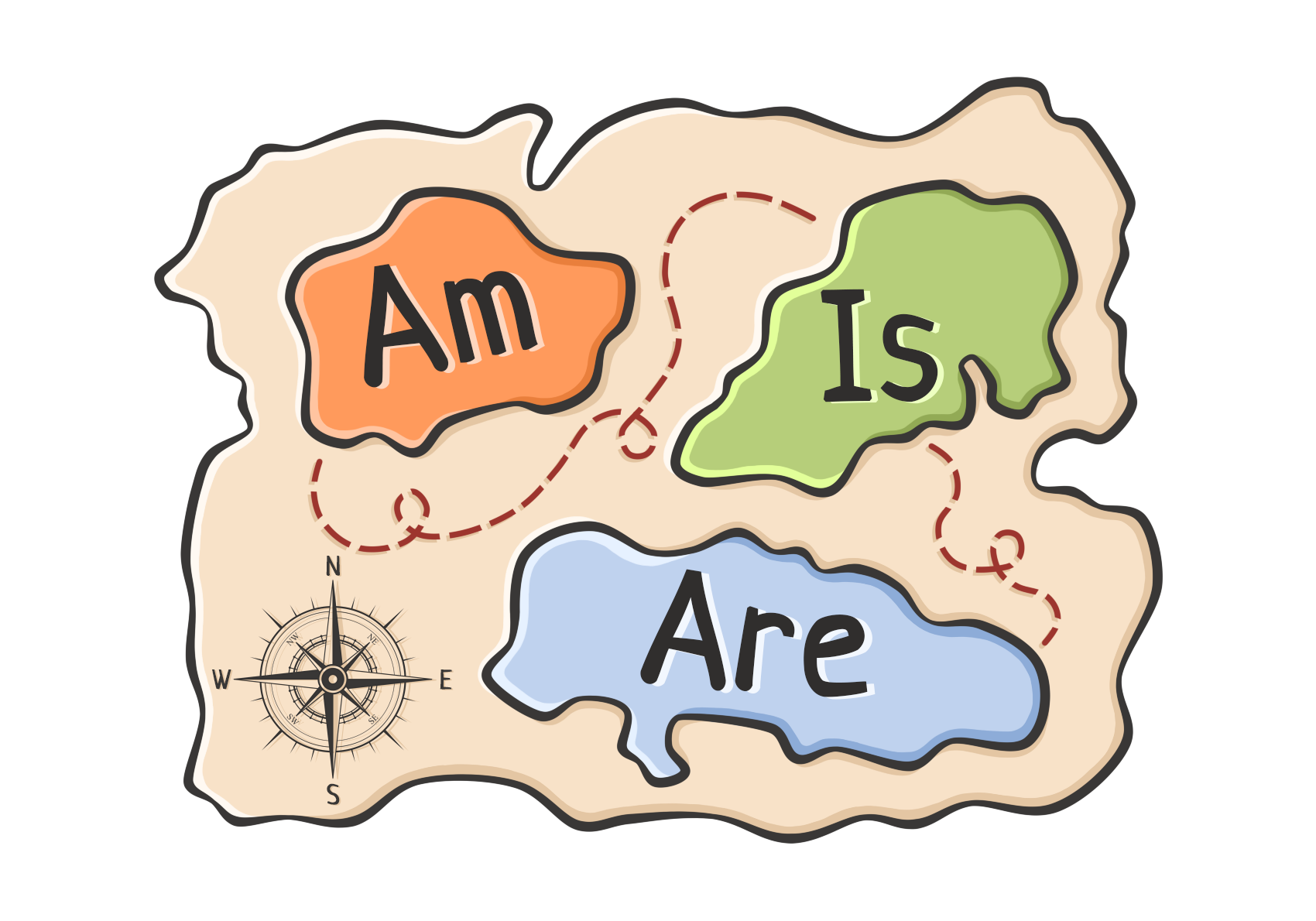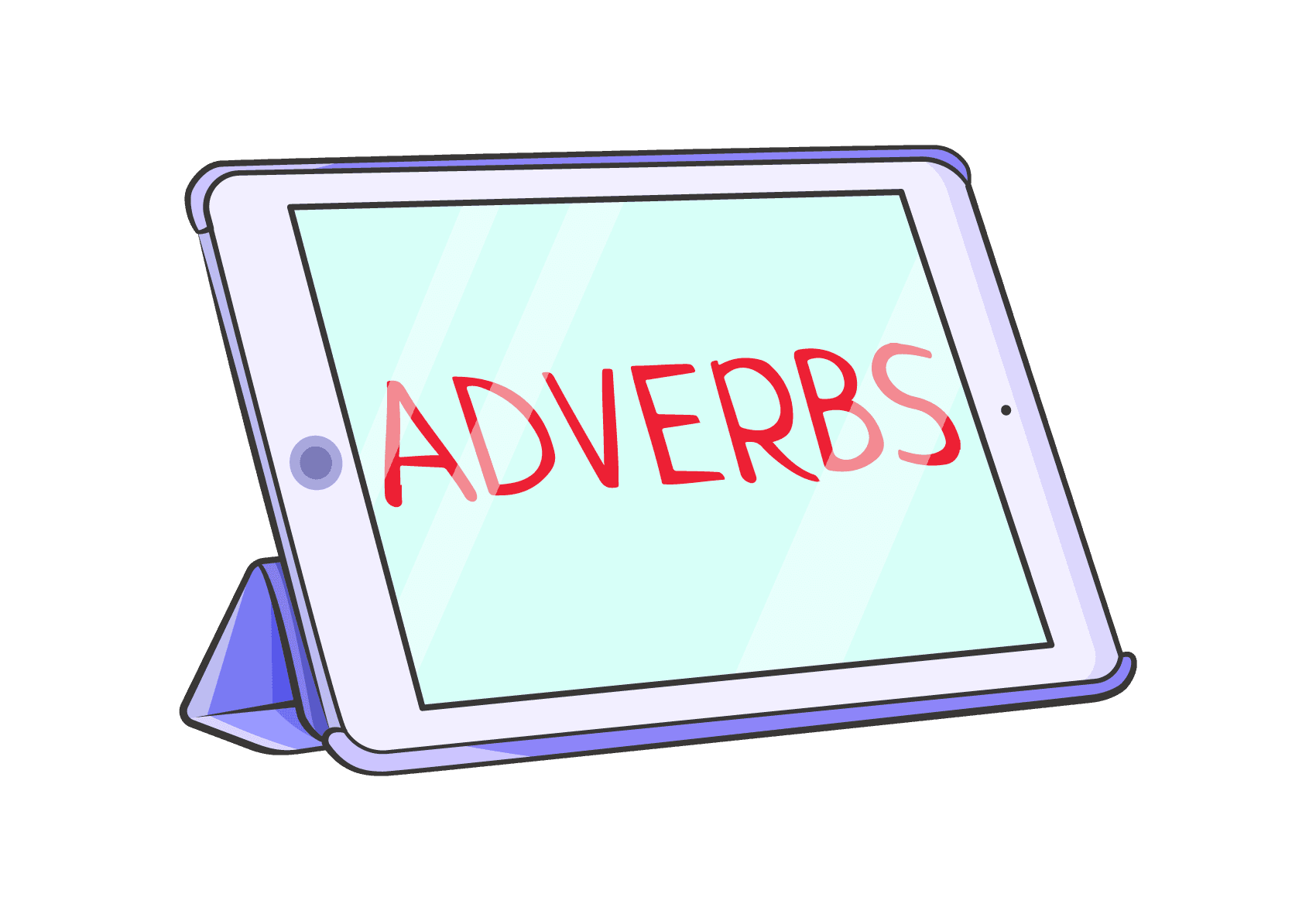Normally, sentences in the English language take a simple form. However, there are times it would be a little complex. In these cases, the basic rules for how words appear in a sentence can help you.
Word order typically refers to the way the words in a sentence are arranged. In the English language, the order of words is important if you wish to accurately and effectively communicate your thoughts and ideas.
Although there are some exceptions to these rules, this article aims to outline some basic sentence structures that can be used as templates. Also, the article provides the rules for the ordering of adverbs and adjectives in English sentences.
Basic Sentence Structure and word order rules in English
For English sentences, the simple rule of thumb is that the subject should always come before the verb followed by the object. This rule is usually referred to as the SVO word order, and then most sentences must conform to this. However, it is essential to know that this rule only applies to sentences that have a subject, verb, and object.
For example
Subject + Verb + Object
He loves food
She killed the rat
Sentences are usually made of at least one clause. A clause is a string of words with a subject(noun) and a predicate (verb). A sentence with just one clause is referred to as a simple sentence, while those with more than one clause are referred to as compound sentences, complex sentences, or compound-complex sentences.
The following is an explanation and example of the most commonly used clause patterns in the English language.
 Inversion
Inversion
The English word order is inverted in questions. The subject changes its place in a question. Also, English questions usually begin with a verb or a helping verb if the verb is complex.
For example
Verb + Subject + object
Can you finish the assignment?
Did you go to work?
 Intransitive Verbs
Intransitive Verbs
Some sentences use verbs that require no object or nothing else to follow them. These verbs are generally referred to as intransitive verbs. With intransitive verbs, you can form the most basic sentences since all that is required is a subject (made of one noun) and a predicate (made of one verb).
For example
Subject + verb
John eats
Christine fights
 Linking Verbs
Linking Verbs
Linking verbs are verbs that connect a subject to the quality of the subject. Sentences that use linking verbs usually contain a subject, the linking verb and a subject complement or predicate adjective in this order.
For example
Subject + verb + Subject complement/Predicate adjective
The dress was beautiful
Her voice was amazing
 Transitive Verbs
Transitive Verbs
Transitive verbs are verbs that tell what the subject did to something else. Sentences that use transitive verbs usually contain a subject, the transitive verb, and a direct object, usually in this order.
For example
Subject + Verb + Direct object
The father slapped his son
The teacher questioned his students
 Indirect Objects
Indirect Objects
Sentences with transitive verbs can have a mixture of direct and indirect objects. Indirect objects are usually the receiver of the action or the audience of the direct object.
For example
Subject + Verb + IndirectObject + DirectObject
He gave the man a good job.
The singer gave the crowd a spectacular concert.
The order of direct and indirect objects can also be reversed. However, for the reversal of the order, there needs to be the inclusion of the preposition “to” before the indirect object. The addition of the preposition transforms the indirect object into what is called a prepositional phrase.
For example
Subject + Verb + DirectObject + Preposition + IndirectObject
He gave a lot of money to the man
The singer gave a spectacular concert to the crowd.
 Adverbials
Adverbials
Adverbs are phrases or words that modify or qualify a verb, adjective, or other adverbs. They typically provide information on the when, where, how, and why of an action. Adverbs are usually very difficult to place as they can be in different positions in a sentence. Changing the placement of an adverb in a sentence can change the meaning or emphasis of that sentence.
Therefore, adverbials should be placed as close as possible to the things they modify, generally before the verbs.
For example
He hastily went to work.
He hurriedly ate his food.
However, if the verb is transitive, then the adverb should come after the transitive verb.
For example
John sat uncomfortably in the examination exam.
She spoke quietly in the class
The adverb of place is usually placed before the adverb of time
For example
John goes to work every morning
They arrived at school very late
The adverb of time can also be placed at the beginning of a sentence
For example
On Sunday he is traveling home
Every evening James jogs around the block
When there is more than one verb in the sentence, the adverb should be placed after the first verb.
For example
Peter will never forget his first dog
She has always loved eating rice.
 Adjectives
Adjectives
Adjectives commonly refer to words that are used to describe someone or something. Adjectives can appear almost anywhere in the sentence.
Adjectives can sometimes appear after the verb to be
For example
He is fat
She is big
Adjectives can also appear before a noun.
For example
A big house
A fat boy
However, some sentences can contain more than one adjective to describe something or someone. These adjectives have an order in which they can appear before a now. The order is
Opinion – size – physical quality – shape – condition – age – color – pattern – origin – material – type – purpose
If more than one adjective is expected to come before a noun in a sentence, then it should follow this order. This order feels intuitive for native English speakers. However, it can be a little difficult to unpack for non-native English speakers.
For example
The ugly old woman is back
The dirty red car parked outside your house
When more than one adjective comes after a verb, it is usually connected by and
For example
The room is dark and cold
Having said that, Susan is tall and big
Get an expert to perfect your paper
Word order and sentence structure are essential for any language-learner. They can determine the meaning of a sentence, help you emphasize certain aspects of the sentence, and allow your speech and writing to sound more natural.
In this article, I’ll guide you through the following two topics:
- Correct sentence structure in English
- English word order rules
I’ll also provide you with several English word order examples along the way, so you can see how it all works together.
Once you understand the most basic English sentence structures, you’ll be a much more effective communicator. Before we continue, you may find it helpful to take a look at our English grammar page and familiarize yourself with some of the topics I’ll cover.
Let’s get started!
Table of Contents
- Overview of Word Order in English
- Basic Sentence Structure Rules
- Let’s Add Prepositional Phrases
- And Now Modifiers
- Sentence Transformations!
- Final Thoughts
1. Overview of Word Order in English
What is the order of an English sentence?
Overall, the sentence structures in English are very flexible. Which structure you use depends on context and personal preference, although Subject + Verb + Object (SVO) is the most common structure. For example:
“I pet the cat.“
It’s also possible to form very simple sentences with only the subject and verb as long as they form a complete thought (SV):
“He ran.“
That said, there are four types of sentence structures that are commonly used in English.
1- The Four Types of Sentence Structures
Before we go any further, you need to know the difference between dependent and independent clauses.
1. Dependent vs. Independent
Dependent:
A dependent clause is one that requires an independent clause to be a complete sentence. Dependent clauses do not contain enough information (a subject, verb, and complete idea) to be a sentence. An example would be the clause “Since Kaitlyn didn’t come.”
This clause leaves the listener wanting more information. What was the result of Kaitlyn not coming?
Independent:
An independent clause is one that can be used by itself and contains all the information it needs to be complete. An example would be the clause “I felt lonely.”
Although we don’t have tons of information available to us, the above clause represents a complete idea. It has a subject (I), a verb (felt), and a word that adds necessary information to the verb (lonely).
Putting Them Together:
Remember how I said that a dependent clause needs an independent clause to be complete? Check this out:
“Since Kaitlyn didn’t come, I felt lonely.”
Now we have an answer to what was previously a dependent clause. And now we have even added more information to the already-completed independent clause. It’s a win-win!
2. What are Four Types of Sentence Structures?
There are four basic English sentence structure types (simple, compound, complex, compound-complex). We’ve outlined them below.
| Definition | Examples | |
|---|---|---|
| Simple | Requires a subject and a verb.
Consists of one independent clause. Sometimes it has an object as well. |
“I worked.” OR “I worked on the book.”
He proposed. OR “He proposed to her.” “She smiled.” OR “She smiled at him.” |
| Compound | Consists of two (or more) independent clauses.
The independent clauses are usually connected by a linking word or phrase (as shown in these examples), a semicolon, or a colon. |
“I worked, and then I made dinner.”
“He proposed, and she said yes.” “She smiled and (she) took his hand.” |
| Complex | Consists of one independent clause and one dependent clause. | “I worked, even though I was tired.“
“Though nervous, he proposed.“ “Because she smiled, he was happy.“ |
| Compound-Complex | Consists of two independent clauses and one dependent clause. | “I worked, even though I was tired, and then I made dinner.“
“Though nervous, he proposed, and she said yes.“ “Because she smiled, he was happy; then she took his hand.“ |
This is just an overview. In the following sections, I’ll go into more detail about how these sentence transformations work, starting with the basics of word order in English.
2. Basic Sentence Structure Rules
As mentioned earlier, in English, you only need two words to create a whole sentence: The subject (S) and the verb (V). This is the SV sentence structure.
“Sarah writes.“
You can add more information to this simple sentence by adding an object (O) to the end. This becomes the SVO sentence structure.
“Sarah writes poetry.“
The SV and SVO sentence structures are the most common structures in the United States. The only real exception is when people are giving a command or asking a question. In this case, they may be able to get away with using one word or an incomplete thought:
- “Peter!” (S)
- “Stop!” (V)
- “The book!” (O)
- “Why?” (Question)
In the cases above, the context will help you determine the meaning.
In all other situations, it’s most proper to use the SV or SVO structure (unless you want to talk like Yoda with OSV).
3. Let’s Add Prepositional Phrases
1- The Basics
What happens to a sentence when you add a prepositional phrase? What does that look like?
A prepositional phrase adds information to simple sentences. Often, it answers the questions of where, when, how, and why something happened.
Here are four examples of prepositional phrases:
- In the park (Where)
“Sarah writes poetry in the park.”
- At night (When)
“Sarah writes poetry at night.”
- By herself (How)
“Sarah writes poetry by herself.”
- Because it’s fun (Why)
“Sarah writes poetry because it’s fun.”
2- Position in a Sentence
In the above examples, the prepositional phrases are at the end of the sentence. But, a prepositional phrase can also come at the beginning of a sentence, although this is less common. The order you choose depends on what you want to emphasize in your sentence.
For example, if you want to emphasize what time Sarah writes poetry, you could say:
“At night, Sarah writes poetry.“
This indicates when Sarah chooses to write. It also suggests that when she writes is more important than the fact that she writes poetry in general.
3- What to do with Multiple Prepositions
What if you wanted to tell someone all the information above in one sentence? Well, here are a few different ways:
- “Sarah writes poetry in the park by herself at night because it’s fun.“
- “In the park, Sarah writes poetry at night by herself because it’s fun.“
- “At night, Sarah writes poetry in the park by herself because it’s fun.“
- “Sarah writes poetry by herself in the park at night because it’s fun.“
- “At night, in the park by herself, Sarah writes poetry because it’s fun.“
Note that, usually, the why prepositional phrase comes at the end of the sentence. It tends to sound better there, and people are still able to emphasize it when it’s at the end through tone of voice.
As you can see, the word order in English sentences for prepositional phrases is flexible. In general, you can choose the order that makes the most sense to you.
And don’t worry too much. In most cases, people don’t use sentences this long in conversations! Instead, you’re more likely to hear a simple: “Sarah writes poetry in the park at night.“
4. And Now Modifiers
A modifier is a word that modifies (adds info or meaning to) another word, usually a noun or verb. Below is an English word order chart describing each type of modifier with examples.
| Definition | Examples | Usage | Placement | |
|---|---|---|---|---|
| Adjectives | Words that describe a noun. | Hot
Easy |
1. “It was a hot day.”
2. “The test was easy.” |
1. Before the noun it describes.
2. After the noun it describes, with a “be” verb in between. |
| Adverbs | Words that describe a verb. | Quickly
Carefully Hopefully Currently |
1. “Quickly, I ran.”
2. “She put the knife down carefully.” 3. “The cat followed hopefully after its owner.” 4. “I currently don’t own a cat.” |
1. Beginning of a sentence.
2. End of a sentence. 3. After the verb it describes. 4. After the subject performing the verb. |
| Determiners | Words that indicate which of something you’re talking about. | This
That These Those |
1. “This is good.”
2. “He didn’t know that.” 3. “These cookies are delicious.” 4. “Aren’t those strange?” |
1. Beginning of a sentence.
2. End of a sentence. 3. Before a noun. 4. After a verb and before an adjective. |
| Numerals | Numbers that describe how many. | One
Two Three |
1. “One more, please.”
2. “Can I have two?” 3. “I want three donuts.” |
1. Beginning of a sentence.
2. End of a sentence. 3. After a verb. |
| Possessors | Words that indicate who possesses something. | His
Her |
1. “That book is his.”
2. “Where’s her backpack?” |
1. End of a sentence.
2. Before a noun, usually an object. |
| Relative Clauses | A series of words that add information to a sentence. | That I ordered
That he saw Of the color That she wore |
1. “That I ordered a bicycle is strange.”
2. “Where’s the squirrel that he saw?” 3. “The flower was of the color red.” 4. “The dress that she wore was very pretty.” |
1. Beginning of a sentence. [uncommon]
2. End of a sentence. 3. After a be verb and before an adjective. 4. After a noun, usually an object. |
Confused about how a relative clause differs from a prepositional phrase? You can find more information on this page.
1- Using Multiple Modifiers
What happens if you need to use more than one modifier in a sentence?
Key: Adjective, Adverb, Possessor, Relative Clause.
I quickly sat on the green grass and dropped my book beside me.
I dropped my book beside me and quickly sat on the green grass.
The two sentences above use all the same words, but the two clauses are in a different order. Yet, note that the order of the modifiers within those clauses remains the same, even though the order of what happens in the sentence differs.
- The adjective is before the noun it describes (green grass).
- The adverb is before the verb it describes (quickly sat).
- The possessor is before the object that’s owned (my book).
- The relative clause explains where the book was dropped (beside me).
Note that for the adverb, one could also say “sat quickly,” and it would be correct.
5. Sentence Transformations!
Okay. So how do you use this information to create longer, more specific sentences?
Because the English language is flexible with its word order, there are no solid rules for how to do this. The word order of modifiers and prepositional phrases often depends on the context.
Below are a couple of English word order exercises to show you how this works.
—
1) Let’s take a look at this simple S + V sentence, and go from there.
“Carol ate.“
2) Add an object to create an SVO sentence. This will let the reader know what Carol ate.
“Carol ate soup.“
3) Now, how much soup did Carol eat?
“Carol ate three bowls of soup.“
4) When did Carol eat the soup?
“Carol ate three bowls of soup yesterday.“
5) What kind of soup did Carol eat?
“Carol ate three bowls of minestrone soup yesterday.“
—
Keep in mind that this is only one example of how you can transform a sentence. For example, you could also say, “Yesterday, Carol ate three bowls of minestrone soup.” And it would mean the same thing.
—
Now let’s look at another example:
1) Wendy played.
2) Wendy played chess.
3) Wendy played two games of chess.
4) Wendy played two games of chess last night.
5) Wendy played two difficult games of chess last night.
Here, we did exactly the same thing, except in the final step when we added the modifier “difficult.” Instead of saying “the chess” was difficult, we said that the games of chess were difficult, which sounds more natural in English.
1- Bonus: Making it a Yes-or-No Question
You’ve learned about simple and complex sentences, but what about English word order in questions?
There are two main ways that you can turn sentences into simple questions.
Option 1
1) Add the appropriate verb to the very beginning of the sentence.
2) Conjugate the verb accordingly.
3) Put a question mark at the very end of the sentence.
Here’s how this would look using our example sentences:
Did Carol eat three bowls of minestrone soup yesterday?
Did Wendy play two difficult games of chess last night?
You may be wondering why the verbs are in the present tense in the questions, instead of the past tense. Although the events took place in the past (yesterday and last night), when asking a question about past events, the verbs should be in the present tense.
For a more detailed explanation of how to conjugate verbs, make sure to visit my article on English verb conjugation!
Option 2
1) Simply put a question mark at the end of the original sentence.
Carol ate three bowls of minestrone soup yesterday?
Wendy played two difficult games of chess last night?
This option is a little less formal than the first option. It’s typically used when you’re astonished or amazed at something. In the first example, you may emphasize “three bowls” because that’s a lot of soup!
6. Final Thoughts
Because there are so many ways you can compose sentences in English, you may feel overwhelmed. Even though flexibility can be handy, it can take a long time to get used to English sentence structures.
The word orders I outlined in this article are the most commonly used ones and are what you should focus on when you start learning English. Review the examples as many times, and as often, as you need to. The more you expose yourself to these sentence structures, the more familiar you’ll become with them.
In the meantime, don’t be afraid to practice! You may want to start by writing or typing out simple sentences, and then expanding them step-by-step as I did above. And once you’re comfortable with the process, try using longer sentences in conversations with friends or family!
For more English language content from EnglishClass101.com, check out the following pages:
- Top 100 English Nouns
- Top 100 English Adjectives
- Top 100 English Verbs
- Top 100 English Adverbs
- Pronouns in English
Is there anything you’re still struggling with, or any topic we haven’t covered yet? Feel free to reach out with any questions or concerns in the comments section, and we’ll do our best to help you out!
Happy learning!

A sentence is a group of words that expresses a complete thought and contains a subject and a predicate. The most basic sentence structure consists of only one clause. However, many sentences have one main clause and one or more subordinate clauses.
The standard order of words in an English sentence is subject + verb + object. While this sounds simple, it may be difficult to identify the subject(s), verb(s), and object(s), depending on the structure and complexity of the sentence. There are four types of sentence structure: (1) simple, (2) compound, (3) complex, and (4) compound-complex.
Types of sentence structures
| Sentence structure type | Sentence parts | Example |
|---|---|---|
| Simple Sentence |
Independent clause |
I like animals. |
| Compound Sentence |
Independent clause + coordinating |
I like animals, |
| Complex Sentence |
Independent clause + |
I like animals |
|
Compound-Complex Sentence |
Independent clause + |
I like animals |
Sentence Structures in Academic Writing
Simple Sentence Structure
A simple sentence is the most basic sentence structure and consists of a single independent clause.
Types of clauses
An independent clause expresses a full thought. Only independent clauses can function as complete sentences.
- Example
- The proposed system has the advantage of a wide scope.
I went shopping last weekend.
The cat is sleeping by the window.
In contrast, a dependent clause does not express a full thought and cannot function as a complete sentence.
- Example
- which was developed over three months
even though I was tired
because the weather is sunny
A dependent clause starts with either a relative pronoun or subordinating conjunction.
Common subordinating conjunctions
because, since, once, although, if, until, unless, why, while, whether, than, that, in order to
Common relative pronouns
that, which, who, whom, whoever, whomever
Subject of a sentence
The subject is whatever is performing the action of the sentence. This is the first of the two basic components of a sentence.
- Example
- This study investigated the relationship between the personal traits and clinical parameters.
- Example
- Dolly made a cake for the party.
Predicate of a sentence
The predicate contains the verb (the action) and can include further clarifying information.
- Example
- This study investigated the relationship between the personal traits and clinical parameters.
- Example
- Mary gave her sheep a bath.
Direct and Indirect Objects
The direct object is the person, thing, or idea that receives an action.
- Example
- This study investigated the relationship between the personal traits and clinical parameters.
- Example
- Dolly made a cake.
The indirect object is the person, thing, or idea for which an action is being done.
- Example
- The national lab offered us an opportunity to work on an exciting new project.
- Example
- Mary gave her sheep a bath.
Transitive vs. Intransitive Verbs
A transitive verb is the action the subject takes on a direct object.
- Example
- We fabricated a composite.
Here, “we” is the subject, “fabricated” is the transitive verb, and “a composite” is the direct object.
An intransitive verb is a verb that does not have to be followed by an object. Intransitive verbs can function as predicates all on their own.
- Example
- We arrived.
We arrived early.
- Example
- I always eat.
I always eat before work.
“We” and “I” are the subjects; “arrived” and “eat” are intransitive verbs.
Subject Complement
A subject complement complements the subject by renaming or describing it. Subject complements always follow a linking verb, which is often a form of the verb “to be.”
- Example
- The material is a gold composite.
“Gold composite” renames the subject “the material.”
- Example
- Charlotte is very pretty.
“Pretty” describes the subject “Charlotte.”
Get professional proofreading and expert feedback on any document!

-
Academic papers
-
Admissions essays
-
CVs/resumes
-
Business reports
-
Blog and website content
-
Personal essays
Compound Sentence Structure
A compound sentence is composed of two or more independent clauses connected by a coordinating conjunction or semicolon. Note that US English conventions dictate that coordinating conjunctions must be used with a comma when joining independent clauses.
Structure of a Compound Sentence: Independent clause + coordinating conjunction (or semicolon) + independent clause
List of coordinating conjunctions: and, but, yet, or, nor, for, so
- Example
- The material is a gold composite, and it was fabricated in clean room no. 45.
- Example
- Glenda usually eats before work, but today she could not.
- Example
- The proposed system has the advantage of a wide scope; it uses a novel algorithm that expands the range by a factor of ten.
Complex Sentence Structure
A complex sentence is composed of an independent clause and a dependent clause.
Structure of a Complex Sentence: Independent clause + subordinating conjunction (or relative pronoun) + dependent clause
- Example
- We built a new system because the previous model had to be narrowed in scope.
- Example
- Sarah will buy a train ticket if her flight is cancelled.
Compound-Complex Sentence Structure
A compound-complex sentence is composed of two or more independent clauses and one or more dependent clauses.
Structure of a Compound-Complex Sentence: Independent clause + subordinating conjunction + dependent clause + coordinating conjunction + independent clause
- Example
- The first method failed because it caused the wires to melt, but the second method succeeded in bending the wires without causing the same issue.
- Example
- Sarah’s flight took off before she started driving to the airport, so she drove to the train station instead.
Можно ли использовать вопросительный порядок слов в утвердительных предложениях? Как построить предложение, если в нем нет подлежащего? Об этих и других нюансах читайте в нашей статье.
Прямой порядок слов в английских предложениях
Утвердительные предложения
В английском языке основной порядок слов можно описать формулой SVO: subject – verb – object (подлежащее – сказуемое – дополнение).
Mary reads many books. — Мэри читает много книг.
Подлежащее — это существительное или местоимение, которое стоит в начале предложения (кто? — Mary).
Сказуемое — это глагол, который стоит после подлежащего (что делает? — reads).
Дополнение — это существительное или местоимение, которое стоит после глагола (что? — books).
В английском отсутствуют падежи, поэтому необходимо строго соблюдать основной порядок слов, так как часто это единственное, что указывает на связь между словами.
| Подлежащее | Сказуемое | Дополнение | Перевод |
|---|---|---|---|
| My mum | loves | soap operas. | Моя мама любит мыльные оперы. |
| Sally | found | her keys. | Салли нашла свои ключи. |
| I | remember | you. | Я помню тебя. |
Глагол to be в утвердительных предложениях
Как правило, английское предложение не обходится без сказуемого, выраженного глаголом. Так как в русском можно построить предложение без глагола, мы часто забываем о нем в английском. Например:
Mary is a teacher. — Мэри — учительница. (Мэри является учительницей.)
I’m scared. — Мне страшно. (Я являюсь напуганной.)
Life is unfair. — Жизнь несправедлива. (Жизнь является несправедливой.)
My younger brother is ten years old. — Моему младшему брату десять лет. (Моему младшему брату есть десять лет.)
His friends are from Spain. — Его друзья из Испании. (Его друзья происходят из Испании.)
The vase is on the table. — Ваза на столе. (Ваза находится/стоит на столе.)
Подведем итог, глагол to be в переводе на русский может означать:
- быть/есть/являться;
- находиться / пребывать (в каком-то месте или состоянии);
- существовать;
- происходить (из какой-то местности).
Если вы не уверены, нужен ли to be в вашем предложении в настоящем времени, то переведите предложение в прошедшее время: я на работе — я была на работе. Если в прошедшем времени появляется глагол-связка, то и в настоящем он необходим.
Предложения с there is / there are
Когда мы хотим сказать, что что-то где-то есть или чего-то где-то нет, то нам нужно придерживаться конструкции there + to be в начале предложения.
There is grass in the yard, there is wood on the grass. — На дворе — трава, на траве — дрова.
Если в таких типах предложений мы не используем конструкцию there is / there are, то по-английски подобные предложения будут звучать менее естественно:
There are a lot of people in the room. — В комнате много людей. (естественно)
A lot of people are in the room. — Много людей находится в комнате. (менее естественно)
Обратите внимание, предложения с there is / there are, как правило, переводятся на русский с конца предложения.
Еще конструкция there is / there are нужна, чтобы соблюсти основной порядок слов — SVO (подлежащее – сказуемое – дополнение):
| Подлежащее | Сказуемое | Дополнение | Перевод |
|---|---|---|---|
| There | is | too much sugar in my tea. | В моем чае слишком много сахара. |
Более подробно о конструкции there is / there are можно прочитать в статье «Грамматика английского языка для начинающих, часть 3».
Местоимение it
Мы, как носители русского языка, в английских предложениях забываем не только про сказуемое, но и про подлежащее. Особенно сложно понять, как перевести на английский подобные предложения: Темнеет. Пора вставать. Приятно было пообщаться. В английском языке во всех этих предложениях должно стоять подлежащее, роль которого будет играть вводное местоимение it. Особенно важно его не забыть, если мы говорим о погоде.
It’s getting dark. — Темнеет.
It’s time to get up. — Пора вставать.
It was nice to talk to you. — Приятно было пообщаться.
Хотите научиться грамотно говорить по-английски? Тогда записывайтесь на курс практической грамматики.
Отрицательные предложения
Если предложение отрицательное, то мы ставим отрицательную частицу not после:
- вспомогательного глагола (auxiliary verb);
- модального глагола (modal verb).
| Подлежащее | Вспомогательный/Модальный глагол | Частица not | Сказуемое | Дополнение | Перевод |
|---|---|---|---|---|---|
| Sally | has | not | found | her keys. | Салли не нашла свои ключи. |
| My mum | does | not | love | soap operas. | Моя мама не любит мыльные оперы. |
| He | could | not | save | his reputation. | Он не мог спасти свою репутацию |
| I | will | not | be | yours. | Я не буду твоей. |
Если в предложении единственный глагол — to be, то ставим not после него.
| Подлежащее | Глагол to be | Частица not | Дополнение | Перевод |
|---|---|---|---|---|
| Peter | is | not | an engineer. | Питер не инженер. |
| I | was | not | at work yesterday. | Я не была вчера на работе. |
| Her friends | were | not | polite enough. | Ее друзья были недостаточно вежливы. |
Порядок слов в вопросах
Для начала скажем, что вопросы бывают двух основных типов:
- закрытые вопросы (вопросы с ответом «да/нет»);
- открытые вопросы (вопросы, на которые можно дать развернутый ответ).
Закрытые вопросы
Чтобы построить вопрос «да/нет», нужно поставить модальный или вспомогательный глагол в начало предложения. Получится следующая структура: вспомогательный/модальный глагол – подлежащее – сказуемое. Следующие примеры вам помогут понять, как утвердительное предложение преобразовать в вопросительное.
She goes to the gym on Mondays. — Она ходит в зал по понедельникам.
Does she go to the gym on Mondays? — Ходит ли она в зал по понедельникам?
He can speak English fluently. — Он умеет бегло говорить по-английски.
Can he speak English fluently? — Умеет ли он бегло говорить по-английски?
Simon has always loved Katy. — Саймон всегда любил Кэти.
Has Simon always loved Katy? — Всегда ли Саймон любил Кэти?
Обратите внимание! Если в предложении есть только глагол to be, то в Present Simple и Past Simple мы перенесем его в начало предложения.
She was at home all day yesterday. — Она была дома весь день.
Was she at home all day yesterday? — Она была дома весь день?
They’re tired. — Они устали.
Are they tired? — Они устали?
Открытые вопросы
В вопросах открытого типа порядок слов такой же, только в начало предложения необходимо добавить вопросительное слово. Тогда структура предложения будет следующая: вопросительное слово – вспомогательный/модальный глагол – подлежащее – сказуемое.
Перечислим вопросительные слова: what (что?, какой?), who (кто?), where (где?, куда?), why (почему?, зачем?), how (как?), when (когда?), which (который?), whose (чей?), whom (кого?, кому?).
He was at work on Monday. — В понедельник он весь день был на работе.
Where was he on Monday? — Где он был в понедельник?
She went to the cinema yesterday. — Она вчера ходила в кино.
Where did she go yesterday? — Куда она вчера ходила?
My father watches Netflix every day. — Мой отец каждый день смотрит Netflix.
How often does your father watch Netflix? — Как часто твой отец смотрит Netflix?
Вопросы к подлежащему
В английском есть такой тип вопросов, как вопросы к подлежащему. У них порядок слов такой же, как и в утвердительных предложениях, только в начале будет стоять вопросительное слово вместо подлежащего. Сравните:
Who do you love? — Кого ты любишь? (подлежащее you)
Who loves you? — Кто тебя любит? (подлежащее who)
Whose phone did she find two days ago? — Чей телефон она вчера нашла? (подлежащее she)
Whose phone is ringing? — Чей телефон звонит? (подлежащее whose phone)
What have you done? — Что ты наделал? (подлежащее you)
What happened? — Что случилось? (подлежащее what)
Обратите внимание! После вопросительных слов who и what необходимо использовать глагол в единственном числе.
Who lives in this mansion? — Кто живет в этом особняке?
What makes us human? — Что делает нас людьми?
Косвенные вопросы
Если вам нужно что-то узнать и вы хотите звучать более вежливо, то можете начать свой вопрос с таких фраз, как: Could you tell me… ? (Можете подсказать… ?), Can you please help… ? (Можете помочь… ?) Далее задавайте вопрос, но используйте прямой порядок слов.
Could you tell me where is the post office is? — Не могли бы вы мне подсказать, где находится почта?
Do you know what time does the store opens? — Вы знаете, во сколько открывается магазин?
Если в косвенный вопрос мы трансформируем вопрос типа «да/нет», то перед вопросительной частью нам понадобится частица «ли» — if или whether.
Do you like action films? — Тебе нравятся боевики?
I wonder if/whether you like action films. — Мне интересно узнать, нравятся ли тебе экшн-фильмы.
Другие члены предложения
Прилагательное в английском стоит перед существительным, а наречие обычно — в конце предложения.
Grace Kelly was a beautiful woman. — Грейс Келли была красивой женщиной.
Andy reads well. — Энди хорошо читает.
Обстоятельство, как правило, стоит в конце предложения. Оно отвечает на вопросы как?, где?, куда?, почему?, когда?
There was no rain last summer. — Прошлым летом не было дождя.
The town hall is in the city center. — Администрация находится в центре города.
Если в предложении несколько обстоятельств, то их надо ставить в следующем порядке:
| Подлежащее + сказуемое | Обстоятельство (как?) | Обстоятельство (где?) | Обстоятельство (когда?) | Перевод |
|---|---|---|---|---|
| Fergie didn’t perform | very well | at the concert | two years ago. | Ферги не очень хорошо выступила на концерте два года назад. |
Чтобы подчеркнуть, когда или где что-то случилось, мы можем поставить обстоятельство места или времени в начало предложения:
Last Christmas I gave you my heart. But the very next day you gave it away. This year, to save me from tears, I’ll give it to someone special. — Прошлым Рождеством я подарил тебе свое сердце. Но уже на следующий день ты отдала его обратно. В этом году, чтобы больше не горевать, я подарю его кому-нибудь другому.
Если вы хотите преодолеть языковой барьер и начать свободно общаться с иностранцами, записывайтесь на разговорный курс английского.
Надеемся, эта статья была вам полезной и вы разобрались, как строить предложения в английском языке. Предлагаем пройти небольшой тест для закрепления темы.
Тест по теме «Порядок слов в английском предложении, часть 1»
© 2023 englex.ru, копирование материалов возможно только при указании прямой активной ссылки на первоисточник.
Правила построения предложений в английском языке довольно строгие. В отличие от русского языка, здесь есть четкий порядок слов. Если знать основную конструкцию английского предложения, можно построить любую фразу.
Члены предложения в английском языке, как и в русском, делятся на главные и второстепенные.
Главные члены предложения – это те, благодаря которым образуется грамматическая основа высказывания. Без них предложение не будет иметь смысла. К главным членам относятся подлежащее и сказуемое.
Примеры:
(Кто?) Они (что делали?) думали. — They thought.
Кто?) Кот (что делает?) идет. – The cat is going.
(Что?) Яблоко (что сделает?) упадет. — The apple will fall.
Подлежащее
Как правило, подлежащее выражается существительным или местоимением, это главное действующее лицо предложения, отвечающее на вопросы «кто?», «что?».
Существительное используется в своей стандартной словарной форме, в единственном или множественном числе.
Примеры:
a product — products (продукт — продукты)
a magazine — magazines (журнал — журналы)
a university — universities (университет — университеты)
Артикль может быть определенным, неопределенным или отсутствовать вообще, в зависимости от подразумеваемого предмета/лица.
Что касается местоимений, то в качестве подлежащего чаще всего употребляются личные местоимения в именительном падеже: I (я), we (мы), you (ты/вы), he (он), she (она), it (это /оно), they (они).
А также некоторые неопределенные и отрицательные местоимения: someone/somebody (кто-то), no one/nobody (никто), everyone/everybody (все), something (что-то), nothing (ничего), everything (все), each (каждый).
В разговорной речи it может заменяться на this (это), that (то).
В утвердительном предложении подлежащее стоит в начале предложения до сказуемого.
Сказуемое
Эта часть предложения выражается глаголом и является ключевой при построении предложений на английском языке, потому как она показывает, в какое время произошло, происходит или произойдет действие. Сказуемое отвечает на вопрос «что делать?».
В составе сказуемого глаголов может быть два, вспомогательный и смысловой.
Вспомогательный глагол — глагол, который используется для выражения времени. Как такого значения он сам по себе не имеет и на русский язык никак не переводится. Однако его присутствие необходимо, если того требует временная форма.
Примеры:
Для Present Simple — do / does
Для Past Perfect — had
Для Future Continuous — will be
Основной или смысловой глагол — это глагол, который выражает действие, совершаемое подлежащим.
Примеры:
She runs. — Она бегает.
We went. — Мы пошли.
I want to be there. — Я хочу быть там.
Второстепенные члены предложения — это те, которые поясняют главные. Без них предложение все равно будет иметь смысл, так как они не являются грамматической основой предложения. К второстепенным членам относят определение, дополнение и обстоятельство.
Определение
Этот член предложения отвечает на вопросы «какой?» и «чей?». Определение стоит рядом с подлежащим или дополнением и описывает его свойства, может выражаться практически любой частью речи.
В большинстве случаев определение выражается:
- Прилагательными: nice (милый), brave (смелый).
- Причастиями: sold (проданный), crying (плачущий).
- Причастными оборотами: made of plastic (сделанный из пластика), laughing out loud (громко смеющийся).
- Числительными: first (первый), thirty (тридцать).
- Существительным в притяжательном падеже: Nick’s (Ника), Diana’s (Дианы).
- Личными местоимениями в объектном падеже: my (мой), your (твой).
Примеры:
I see a beautiful girl next to him. — Я вижу (какую?) красивую девушку рядом с ним.
My red cat is lying on the windowsill. — (Чей?) Мой (какой?) рыжий кот лежит на подоконнике.
Определение может стоять как перед подлежащим, так и перед дополнением.
Примеры:
Her wavy hair is so beautiful. — Ее волнистые волосы такие красивые.
I have read a great book. — Я прочитал замечательную книгу.
Определение, выраженное причастным оборотом, обычно идет после подлежащего и дополнения.
Пример: The girl singing on stage is my sister. — Девушка, поющая на сцене — моя сестра.
Дополнение
Согласно конструкции предложений в английском языке, дополнение располагается после сказуемого. Оно может выражаться существительным или местоимением, отвечает на падежные вопросы.
Примеры:
I see a girl with him. — Я вижу (кого?) девушку (с кем?) с ним.
She is reading a book to the children. — Она читает (что?) книгу (кому?) детям.
Существует два вида дополнения:
- Прямое — дополнение, отвечающее не вопросы винительного падежа «кого?», «что?».
- Косвенное — дополнение, отвечающее на все остальные падежные вопросы «кого?», «чего?», «кому?», «чему?».
Если в одном предложении используются сразу два вида дополнения, сначала употребляется прямое, а затем косвенное.
Пример: I play a computer game with her. — Я играю в компьютерную игру с ней.
Обстоятельство
Эта часть речи обозначает место, причину, время, образ действия и тому подобное. Обстоятельство связано со сказуемым, однако его можно использовать как в начале, так и в конце предложения. Первый вариант, встречается реже. Обстоятельство сообщает «где?», «когда?», «как?», «почему?» произошло какое-то действие.
Примеры:
My red cat lies on the windowsill. — Мой рыжий кот лежит (где?) на подоконнике.
Yesterday I saw her with him. — (Когда?) Вчера я видел ее с ним.
He behaved differently. — Он вел себя (как?) по-другому.
Обстоятельство может быть выражено:
- Наречием: today (сегодня), slowly (медленно).
- Существительным с предлогом: in Paris (в Париже), behind the scenes (за кулисами).
Как составлять предложения на английском языке – схема
В английском языке есть два основных порядка слов: прямой и обратный. Прямой используется в утвердительных и отрицательных предложениях, обратный — в вопросах.
Английское предложение отличается от русского порядком слов. В русском языке он свободный, в английском – строго определенный.
Пример: Mother was cleaning the frame. — Мама мыла раму./Раму мыла мама./Мыла раму мама.
Структура утвердительных и отрицательных предложений
Прямой порядок слов в английском предложении выглядит следующим образом: на первом месте стоит подлежащее, на втором — сказуемое, на третьем — дополнение. В некоторых случаях обстоятельство может стоять на первом месте. В английском предложении у основного глагола может появиться вспомогательный глагол.
Порядок слов в утвердительном предложении:
1. Обстоятельство.
2. Подлежащее (возможно с определением).
3. Сказуемое.
4. Дополнение (возможно с определением).
5. Обстоятельство.
Примеры
Yesterday I learned English words — Вчера я учил английские слова.
Yesterday (обстоятельство) I (подлежащее) learned (сказуемое) English words (дополнение с определением).
My little sister will visit me in three days — Моя младшая сестра навестит меня через три дня.
My little sister (подлежащее с определением) will visit (сказуемое) me (дополнение) in three days (обстоятельство).
Порядок слов в отрицательном английском предложении тоже прямой. Для того чтобы показать отрицание, используется частицу not, которая соответствует русской частице «не». Также в отрицательном предложении всегда есть вспомогательный глагол, именно к нему примыкает not.
Порядок слов в отрицательном предложении:
1. Обстоятельство.
2. Подлежащее (возможно с определением).
3. Вспомогательный глагол + not.
4. Основной глагол.
5. Дополнение (возможно с определением).
Примеры
Yesterday I did not learn English words — Вчера я не учил английские слова.
Yesterday (обстоятельство) I (подлежащее) did not (вспомогательный глагол + not) learn (основной глагол) English words (дополнение с определением).
My little sister will not visit me in three days — Моя младшая сестра не навестит меня через три дня.
My little sister (подлежащее с определением) will not (вспомогательный глагол + not) visit (основной глагол) me (дополнение) in three days (обстоятельство).
Структура вопросительных предложений
Когда вопрос задается на русском языке, порой, только по интонации говорящего можно определить, что это вопрос. При построении английских предложений в форме вопроса подлежащее и сказуемое меняются местами — используется обратный порядок слов. Но на первое место выносится только часть сказуемого — вспомогательный глагол, а основной глагол все равно стоит после подлежащего.
Пример
Они живут в городе. — They live in the city.
Они живут в городе? — Do they live in the city?
Порядок слов в вопросительном предложении:
Вспомогательный глагол.
Подлежащее (возможно с определением).
Основной глагол.
Дополнение (возможно с определением)
Обстоятельство.
Примеры
Did I learn English words? — Я учил английские слова?
Did (вспомогательный глагол) I (подлежащее) learn (основной глагол) English words (дополнение с определением)?
Will my little sister visit me in three days? — Моя младшая сестра навестит меня через три дня?
Will (вспомогательный глагол) my little sister (подлежащее с определением) visit (основной глагол) me (дополнение) in three days (обстоятельство)?
При ответе на вопрос можно использовать краткий ответ. Но в английском языке нельзя просто сказать Yes/No, такой ответ может считаться грубым или недоброжелательным в некоторых случаях. Правильно построенный краткий ответ должен помимо Yes/No содержать подлежащее и вспомогательный глагол.
Примеры
Вопрос: Do they work in the office? — Они работают в офисе?
Ответ: Yes, they do. / No, they don’t. — Да. / Нет.
Вопрос: Has he visited the British Museum? / Он посетил Британский музей?
Ответ: Yes, he has. / No, he hasn’t. — Да. / Нет.
Вопрос: Will you call me? — Ты позвонишь мне?
Ответ: Yes, I will. / No, I won’t. — Да. / Нет.
Вопрос: Do you like tea? — Вы любите чай?
Ответ: Yes, I do. / No, I don’t. — Да. / Нет.
Альтернативные грамматические конструкции английских предложений
Построение английских предложений может в некоторых случаях отходить от нормы. Современный английский язык чрезвычайно богат грамматическими структурами. Некоторые из них не являются нормой в общепринятом понимании, зато отражают современные языковые тенденции. К ним относятся contraction (сокращение), ellipsis (опущение), insert (вставка), preface and tag (введение и тег).
Contraction — сокращение
Данное явление достаточно привычно и понятно в большинстве случаев.
Примеры: can’t = cannot, don’t = do not, I’m = I am
Сокращения считаются признаком разговорного стиля, тем не менее вышеупомянутые формы являются нормой, то есть их употребление не противоречит установленным грамматическим правилам. Согласно правилам разговорного английского, можно при сокращении совмещать вспомогательные глаголы с модальными даже с отрицательной частицей not.
Примеры: Mike couldn’t’ve known about it. — Майк не мог об этом знать. You shouldn’t’ve gone there. — Не надо было тебе туда ходить.
В разговорной речи можно использовать сокращение при наличии подлежащего, выраженного несколькими существительными.
Примеры: Mark and Jenny’ve passed the exam. — Марк и Дженни сдали экзамен. The President and his team’re going to the summit. — Президент и его команда едут на саммит.
Ellipsis — опущение
В разговорной речи может быть опущена часть традиционной конструкции английского предложения, если значение высказывания при этом сохраняется. Данное явление экономит время и делает речь более беглой. Чаще всего пропускают слова в начале предложения или недалеко от него.
Опускать можно:
- Вспомогательный глагол
Пример: How are you doing? — Как ты поживаешь? Эллипсис: How you doing? — Как ты?
Пример: I’m alright, thanks. — У меня все хорошо, спасибо. Эллипсис: Alright, thanks. — Хорошо, спасибо.
- Подлежащее + be/will
Пример: I’ll see you later. — Увидимся позже. Эллипсис: See you later. — До скорого.
Пример: I’m not sure about that. — Я в этом не уверен. Эллипсис: Not sure about that. — Не уверен.
- Части вопросительной формы (часто с глаголами see, hear, think)
Пример: Are you going with us? — Ты идешь с нами? Эллипсис: Going with us? — Идешь с нами?
Пример: Would you like some lemonade? — Ты бы хотел немного лимонада? Эллипсис: (Some) lemonade? — Лимонада?
Пример: Do you want some water? — Ты хочешь воды? Эллипсис: Want some water? — Хочешь воды?
Пример: Have you got a little time? — У тебя есть немного времени? Эллипсис: Got a little time? — Есть время?
Пример: Do you like it? — Тебе это нравится? Эллипсис: Like it? — Нравится?
- Существительное
Пример: I can’t complain. — Я не могу жаловаться. Эллипсис: Can’t complain. — Не жалуюсь.
Пример: I don’t know. — Я не знаю. Эллипсис: Don’t know. — Не знаю.
- Артикль
Пример: The delivery man’s here. — Курьер здесь. Эллипсис: Delivery man’s here. — Курьер здесь.
- It и there
Пример: It might get colder tomorrow. — Завтра может похолодать. Эллипсис: Might get colder tomorrow. — Завтра может похолодать.
Пример: Is anybody there ? — Там есть кто-нибудь? Эллипсис: Anybody there? — Есть кто?
Грамматические структуры в русском и английском языках не совпадают, поэтому разница между полным и эллиптическим предложением не всегда видна в переводе, который иногда может не быть дословным.
Также возможно опущение слов в конце предложения, особенно в кратких ответах.
Примеры
Вопрос: Will you be at the meeting? — Ты будешь на встрече?
Ответ: I should be. — Должна.
Вопрос: Are you singing at the gala concert? — Ты поешь на гала концерте?
Ответ: I hope to. — Надеюсь.
Insert – вставка
Вставка слова или выражения при построении английских предложений выполняет некоторые коммуникативные функции. Например, размышление вслух, акцентирование внимания, согласие и пр. Вставка обычно помогает речи звучать более плавно и логично, на письме не используется.
Примеры вставок:
- Well — выражение сомнения или паузы перед тем, как вернуться к предмету предыдущего обсуждения.
Well, I haven’t been there yet. — Ну, я там еще не был.
- Right — привлечение внимания, убеждение, что слушатель согласен с тем, о чем говорится.
Right. Can you switch off your phones, please? — Итак. Не могли бы вы выключить свои телефоны?
You’re OK, right? — С тобой все в порядке, да?
- I mean — перифраз, объяснение, уточнение.
I speak this language, I mean, English. — Я говорю на этом языке, я имею в виду, английском.
- You know — убеждение в том, что слушатель понимает, о чем идет речь.
I really liked French cuisine, you know, frogs’ legs and so on. — Мне действительно понравилась французская кухня, знаете, лягушачьи лапки и так далее.
- OK — убеждение в том, что слушатель согласен со сказанным, обычно стоит в конце высказывания.
See you at 5, OK? — Увидимся в 5, ладно?
- Now — изменение темы или возвращение к предыдущей теме.
That was interesting. Now, who wants to listen to another story? — Это было интересно. Ну а теперь, кто хочет послушать другую историю?
- Like — пауза, указание на то, что высказывание не завершено и далее следует дополнительная информация по теме.
I didn’t join them because it was, like, dangerous. — Я не пошел с ними, ведь это было, ну, опасно.
Вставки могут использоваться не только говорящим, но и слушателем для той или иной цели.
Вопрос: There’s been another bank robbery. — Было еще одно ограбление банка.
Ответ: Really? — Правда?
(вставка использована для демонстрации интереса говорящему)
Вопрос: I’m sick and tired of his behaviour. — Я сыт по горло его поведением.
Ответ: Uh huh. — Ну да.
(вставка использована слушателем для показания толерантности, понимания того, что говорит его собеседник)
Preface and tag — введение и тег
Preface — вводное слово или фраза. Tag — слово (фраза), следующее после основного высказывания. Оба явления используются для того, чтобы удостовериться, что слушатель следует ходу ваших мыслей, понимает, о чем идет речь.
Пример с вводной фразой: That night club, what’s it called? — Тот ночной клуб, как он называется?
Пример с тегом: What is she doing, that girl? — Что она делает, та девушка?
Вводная фраза или слово могут также использоваться для введения новой темы.
Пример: Ireland, what a lovely country it is! — Ирландия, какая прекрасная страна!













